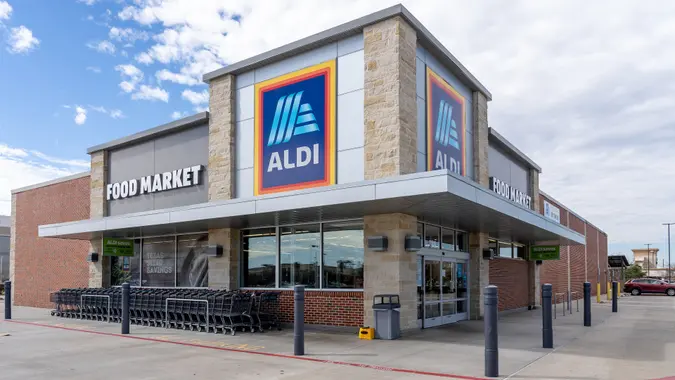A Second Bank Account Might Be the Hack You Need To Fix Your Budget

Commitment to Our Readers
GOBankingRates' editorial team is committed to bringing you unbiased reviews and information. We use data-driven methodologies to evaluate financial products and services - our reviews and ratings are not influenced by advertisers. You can read more about our editorial guidelines and our products and services review methodology.

20 Years
Helping You Live Richer

Reviewed
by Experts

Trusted by
Millions of Readers
For most Americans, payday isn’t quite the celebration it used to be. With 67% of U.S. workers living paycheck to paycheck, per a 2025 report by PNC Bank, money tends to hit checking accounts only to disappear almost immediately.
According to debt and bankruptcy lawyer Ashley Morgan, that cycle often starts with a simple blind spot: Not really knowing where your money goes.
“A lot of my clients think they know what they’re spending, but until they look at their bank account, they don’t,” she said. “They might guess they’re spending $500 a month on food, and then realize it’s actually $800.”
So how do you stop money from slipping through the cracks? Morgan suggests a low-tech solution with a modern twist.
“Back in the day, people used the envelope system, allotting a certain amount of cash to each envelope to curb spending,” she explained. “Having a second or third bank account is a modern-day envelope system.”
The Pros of a Second Bank Account
A second (or third) account helps you separate your spending and saving, making it easier to stay on track. Think of one account as your everyday spending fund — bills, groceries, gas — and the other as a safe haven for money that needs to sit tight.
Morgan said most people benefit from two to three accounts total:
- Everyday spending for regular bills and purchases.
- Short-term savings or sinking funds for known but irregular costs, like car maintenance, doctor’s visits or holiday shopping.
- Long-term savings for emergencies or future goals.
“When people budget month to month, they often forget those periodic expenses,” she said. “Setting money aside for things like car repairs or medical costs means you’re not blindsided when they pop up.”
The Best Way To Set One Up
Morgan recommends starting small: Change your direct deposit so that $100 to $300 goes straight into your secondary account each paycheck. From there, gradually increase the amount as you adjust to the new system.
“If you try to do everything at once, it all falls apart,” she said. “Do a gradual transition and start allocating a few hundred dollars, then build from there.”
She also suggests keeping your savings account at a different bank from your main checking account to prevent temptation.
“If it’s too easy to transfer money back and forth, people will do it,” Morgan said. “That little bit of friction — like having to wait a day for a transfer — can make a big difference.”
The Psychology of ‘Buy Now Pay Later’
A second account can help you plan for purchases you actually can afford — unlike “buy now, pay later” options that can trick you into overspending.
“Breaking up payments can work if you’re buying something like a plane ticket you’ve budgeted for,” said Morgan. “But when you start using it for groceries or takeout, it gets risky.”
She said the popularity of those services reflects a budgeting problem: People want to break costs into smaller chunks but lack a system to do so responsibly.
Avoiding Overdraft Fees and Budget Burnout
The key to making multiple accounts work is monitoring your spending regularly — at least once a month, ideally more often.
“Look at your budget every three to six months and reexamine your goals,” Morgan said. “Your priorities change. Maybe you have new medical expenses, or you’re saving for a house. Your budget should evolve with you.”
As for overdraft fees, Morgan said they’re often a sign your setup isn’t working.
“If you’re constantly transferring money between accounts just to keep a minimum balance, that signals something’s wrong with your budget,” she explained. “You need to ask: Is it a spending issue or an income issue?”
More From GOBankingRates
 Written by
Written by  Edited by
Edited by 

























